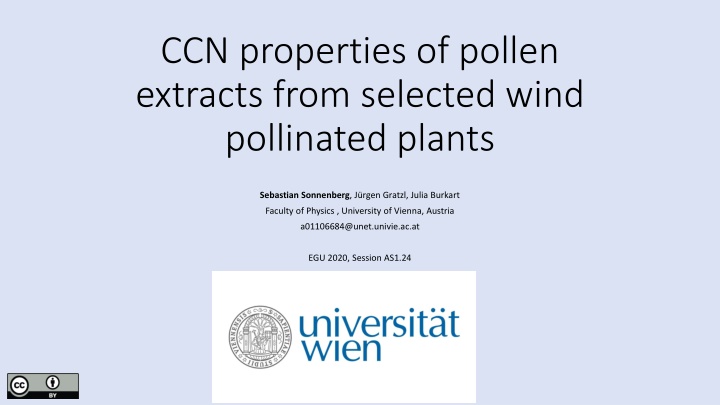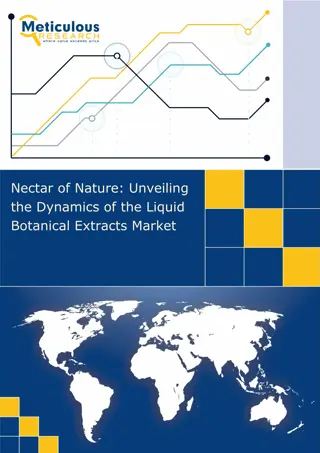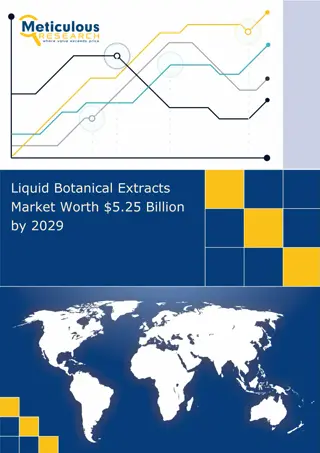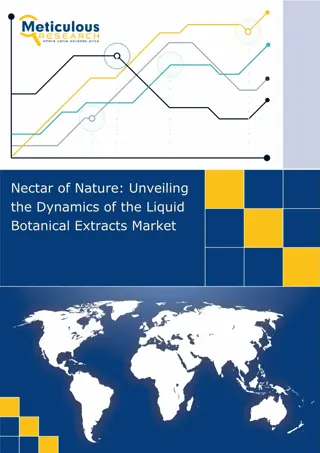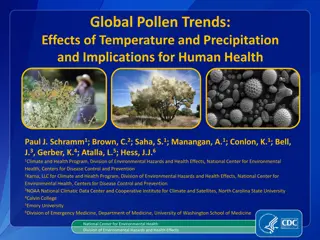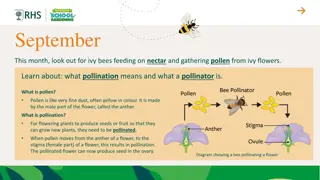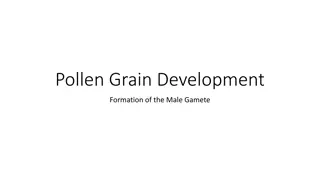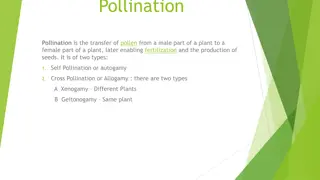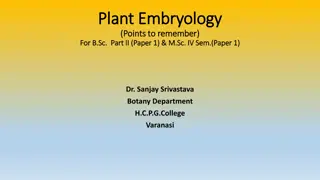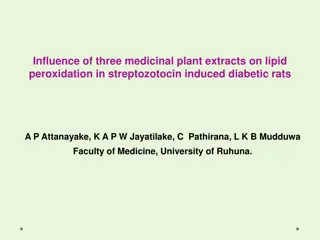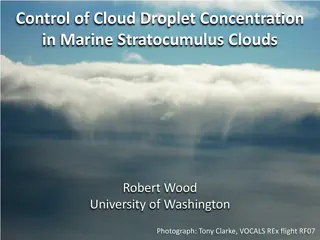CCN Properties of Pollen Extracts: Experimental Insights
The study examines the CCN properties of pollen extracts from wind-pollinated plants. It explores the impact of cytoplasmic materials and Subpollen Particles on cloud condensation. Calibration of the Cloud Condensation Nuclei Counter (CCNC), experimental setup, and results are discussed. The research focuses on pollen types such as Birch, Grass, Hazel, Mugwort, and Ragweed, shedding light on their condensation activity. Methods for analyzing soluble cytoplasmic material and the potential for pollen as cloud condensation nuclei are explored.
Download Presentation

Please find below an Image/Link to download the presentation.
The content on the website is provided AS IS for your information and personal use only. It may not be sold, licensed, or shared on other websites without obtaining consent from the author.If you encounter any issues during the download, it is possible that the publisher has removed the file from their server.
You are allowed to download the files provided on this website for personal or commercial use, subject to the condition that they are used lawfully. All files are the property of their respective owners.
The content on the website is provided AS IS for your information and personal use only. It may not be sold, licensed, or shared on other websites without obtaining consent from the author.
E N D
Presentation Transcript
CCN properties of pollen extracts from selected wind pollinated plants Sebastian Sonnenberg, J rgen Gratzl, Julia Burkart Faculty of Physics , University of Vienna, Austria a01106684@unet.univie.ac.at EGU 2020, Session AS1.24
Introduction and goals of this study Experimental setup Calibration of the Cloud Condensation Nuclei Counter (CCNC) Results for the CCN ability of pollen samples Conclusion
Introduction and goals of this study Pollen emitted by anemophilous plants can travel long distances before reaching flowering plants to enable the growth of new seeds. During their time in the atmosphere they can experience conditions of high moisture, enabling a process called osmotic shock. During such, pollen grains can rupture and expell both soluble cytoplasmic material and insoluble particulates called Subpollen Particles (SPP)1. Being coated in hygroscopic cytoplasm can enhance the condensation activity of SPP while their smaller size increases their residence time in the air, both aspects making them potentially effective Cloud Condensation Nuclei (CCN). Sample solutions were prepared following the extraction method described in Gratzl (2020) 2. For this experiment the CCN ability of the soluble cytoplasmic material from 5 pollen types were analyzed. - Betula pendula (Birch) - Phleum pratense (Grass) - Poa pratensis (Grass) - Corylus avellana (Hazel) - Artemisia vulgaris (Mugwort) - Ambrosia artemisiifolia (Ragweed) 1Steiner, Allison L et al. (2015), Pollen as atmospheric cloud condensation nuclei , Geophysical research letters 42.9, pp. 35963602 2 Gratzl J rgen, Extraction and size distribution measurements of subpollen particles , 2020, University of Vienna
Experimental setup CCNC Cloud Condensation Nuclei Counter CPC Condensation Particle Counter DMA Differential Mobility Analyzer
Calibration of the CCNC Calibration of the CCNC (with an 0.1 wt% (NH4)2SO4 aqueous solution) can be done in 2 ways: D-Scans: S-Scans Stepping the particle size while keeping the supersaturation In the CCNC constant. Stepping the supersaturation while keeping the particle size constant
Calibration of the CCNC Doubly-charge correction for both methods: Setting the baseline of the fit to the plateu of doubly charged particles. For D-Scans the diameter value that corresponds to the CCNC/CPC ratio 0.5 is the critical diameter. Through Koehler theory it can be related to the critical supersaturation SScrit of the particle. For S-Scans The critical supersaturation SScrit is the value on the x-axis that corresponds to the CCNC/CPC ratio of 0.5
Calibration of the CCNC Relating the SScrit values to the corresponding temperature gradient in the CCNC for the calibration: Calibration line for D-scan measurements (at nominal SS values 0,1%, 0.2%, 0.3%, 0.4%, 0.5%) Deviations from the linear relationship between SScrit and DT can be adjusted by a non-linear fit
Results for the CCN ability of pollen samples All pollen measurements were done with the D-Scans method
Results for the CCN ability of pollen samples Using the Koehler -model3 the values of all pollen samples have been calculated using the approximation: 4 ?3 = 27 ??3 ??2(??) sc is the calculated critical supersaturation from the calibration measurement Da is the critical diameter from the calibration meausurements (with (NH4)2SO4 ) with 4 ?? ? ? ? ? ? = ?? is the mlecular weight of pure water ? is the density of pure water ? is the surface tension of pure water This approximation is valid for values above 0.1 and for highly dilute solutions. High values indicate high hycroscopicity. 3 M. D. Petters and S. M. Kreidenweis, A single parameter representation of hygroscopic growth and cloud condensation nucleus activity , Atmos Chem. Phys. 7, 1961-1971 (2007)
Results for the CCN ability of pollen samples Ammonium sulfate (NH4)2SO4 SS (%) (nominal) SSeff(%) 0.14 Dcrit (nm) 0.1 0.73 99 62 0.2 0.28 0.73 0.3 0.42 47 0.73 0.4 0.60 37 0.73 0.5 0.88 29 0.73 Betula pendula SS (%) (nominal) SSeff(%) 0.14 Dcrit (nm) 0.1 0.18 157 98 0.2 0.28 0.18 0.3 0.42 78 0.16 0.4 0.60 60 0.18 0.5 0.88 52 0.12
Conclusion The values of all analyzed cytoplasm samples lie in the range 0.1 0.2. Highly hygroscopic species like (NH4)2SO4 have a high value of 0.73. In comparison the cytoplasm samples show lower CCN activity but can still be activated at atmospheric conditions. values in continental regions are said to fall in the range of 0.1- 0.4 4. The lower range indicates the presence of organic substances which is consistent when looking at the components of pollen cytoplasm, mainly proteins and starch 5. The results also agree with the findings from Mikhailov et al. (2019) 6 where falls into the region 0.1 - 0.2 as well. 4 K. J. Pringle et al. (2010), Global distribution of the effective aerosol hygroscopicity parameter for CCN activation , Atmos Chem. Phys. 10, 5241-5255 (2010) 5Steiner, Allison L et al. (2015), Pollen as atmospheric cloud condensation nuclei , Geophysical research letters 42.9, pp. 35963602 6 Mikhailov et al. (2019), Subpollen Particles as Atmospheric Cloud Condensation Nuclei , Izvestiya, Atmospheric and Oceanic Physics 55, 357-364
